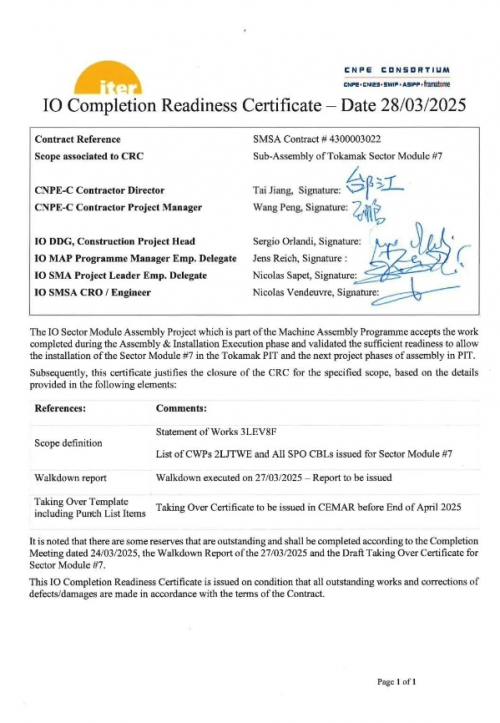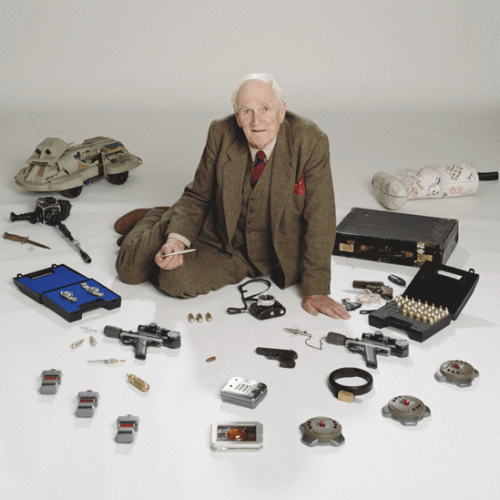Q???What was the Q during that time though?
You are using an out of date browser. It may not display this or other websites correctly.
You should upgrade or use an alternative browser.
You should upgrade or use an alternative browser.
Nuclear Fusion
- Thread starter Flyaway
- Start date
Forest Green
ACCESS: Above Top Secret
- Joined
- 11 June 2019
- Messages
- 9,508
- Reaction score
- 17,402
Output/Input Energy ratio.Q???
SUPER=BUG
ACCESS: Secret
- Joined
- 25 September 2024
- Messages
- 212
- Reaction score
- 336
3月28日日,国际ITER组织 (IO) 在项目现场举行了盛大的仪式,正式宣布编号真空容器的7个模块已完成SSAT (模块组装专用工具) 上的所有工作,并达到了吊装入坑 (托卡马克坑) 的条件。这是ITER项目的一个关键里程碑,标志着中国核工程联合体承担的ITER堆芯安装项目取得重大进展,并为世界上最大的 “人造太阳” 计划按节点推进奠定基础。IO总干事巴拉巴斯基指出,这一节点的实现再次证明了项目团队的奉献精神,想象力和专业精神。
中核集团联合体是由中国核工程股份有限公司 (CNNC) 牵头,核工业西南物理研究院、中国核工业二十三建设有限公司组成的专业团队,中国科学院等离子体物理研究所和法国Famatome 1。以下是CNNC工程综合体的主要信息:
主要成就:
参与ITER项目: 在国际热核聚变实验堆 (ITER) 项目中,中核集团成功获得了包括主机安装合同、真空室模块组件合同和真空室模块凹坑组件合同,成为ITER项目主机安装的独家承包商,大大提升了中国团队在国际科学项目中的话语权和影响力12。
科技创新: 在ITER项目实施过程中,联合体团队克服了技术复杂,国际合作与协调困难等挑战,并圆满完成了一系列关键节点和重大工程任务,包括1,250吨杜瓦底座、下杜瓦油缸、较低的杜瓦冷屏,以及极地场1中的6号超导线圈。
国际合作
中法合作: 中核集团联合体与法国Framatome等国际知名企业紧密合作,组成中国、意大利和法国联合体,共同推动ITER项目的实施1。
国际认可度: 中核集团的出色表现得到了ITER组织的高度认可,并被授予 “可信赖承包商” 称号,其安装包管理模式得到了国际同行的广泛赞誉1。
未来展望
中国核工程联合体将继续在国际大科学工程中发挥重要作用,推动核能科技创新发展,为全球能源可持续发展贡献中国智慧和力量。同时,联合体还将积极探索核能综合利用的新路径,助力实现碳峰值和碳中和的目标。 PS: 这是IO签署的7号真空室模块 (SM7) 预组装完成证书
PS: 这是IO签署的7号真空室模块 (SM7) 预组装完成证书
https://www.cnnc.com /cnnc/xwzx65/zhyw0/199b0b1e722f484cba853ec16caa89e3/index.html
中核集团联合体是由中国核工程股份有限公司 (CNNC) 牵头,核工业西南物理研究院、中国核工业二十三建设有限公司组成的专业团队,中国科学院等离子体物理研究所和法国Famatome 1。以下是CNNC工程综合体的主要信息:
主要成就:
参与ITER项目: 在国际热核聚变实验堆 (ITER) 项目中,中核集团成功获得了包括主机安装合同、真空室模块组件合同和真空室模块凹坑组件合同,成为ITER项目主机安装的独家承包商,大大提升了中国团队在国际科学项目中的话语权和影响力12。
科技创新: 在ITER项目实施过程中,联合体团队克服了技术复杂,国际合作与协调困难等挑战,并圆满完成了一系列关键节点和重大工程任务,包括1,250吨杜瓦底座、下杜瓦油缸、较低的杜瓦冷屏,以及极地场1中的6号超导线圈。
国际合作
中法合作: 中核集团联合体与法国Framatome等国际知名企业紧密合作,组成中国、意大利和法国联合体,共同推动ITER项目的实施1。
国际认可度: 中核集团的出色表现得到了ITER组织的高度认可,并被授予 “可信赖承包商” 称号,其安装包管理模式得到了国际同行的广泛赞誉1。
未来展望
中国核工程联合体将继续在国际大科学工程中发挥重要作用,推动核能科技创新发展,为全球能源可持续发展贡献中国智慧和力量。同时,联合体还将积极探索核能综合利用的新路径,助力实现碳峰值和碳中和的目标。
 PS: 这是IO签署的7号真空室模块 (SM7) 预组装完成证书
PS: 这是IO签署的7号真空室模块 (SM7) 预组装完成证书https://www.cnnc.com /cnnc/xwzx65/zhyw0/199b0b1e722f484cba853ec16caa89e3/index.html
SUPER=BUG
ACCESS: Secret
- Joined
- 25 September 2024
- Messages
- 212
- Reaction score
- 336
Sorry, it looks like the link above is wrong.
Of use for fusion and hypersonics
Shock wave-induced fluid interface instability is a common key scientific issue in aerospace vehicles and inertial confinement nuclear fusion, while the related basic theories are still insufficient.Through experiments, the researchers verified that the device could generate a strong shock wave with the Mach number higher than 3.0 under a single-stage conversion, which was conducive to the initial disturbance interface setting and high-speed flow field diagnosis.

 www.cambridge.org
www.cambridge.org
Shock wave-induced fluid interface instability is a common key scientific issue in aerospace vehicles and inertial confinement nuclear fusion, while the related basic theories are still insufficient.Through experiments, the researchers verified that the device could generate a strong shock wave with the Mach number higher than 3.0 under a single-stage conversion, which was conducive to the initial disturbance interface setting and high-speed flow field diagnosis.

Shock-tube experiments on strong-shock-driven single-mode Richtmyer–Meshkov instability | Journal of Fluid Mechanics | Cambridge Core
Shock-tube experiments on strong-shock-driven single-mode Richtmyer–Meshkov instability - Volume 1006
Maybe video gamers aren't completely worthless
No worries about this from fusion--or at least a lower level
Just in—
No worries about this from fusion--or at least a lower level
Just in—
Last edited:
- Joined
- 9 October 2009
- Messages
- 21,969
- Reaction score
- 13,616

British nuclear fusion pioneer plunges after ditching reactor plans
Oxford’s First Light blames lack of funding after abandoning prototype power plant
Dilandu
I'm dissatisfied, which means, I exist.
Am I the one aho see a troubling pattern with British technological startups? I recall the sad story of "Reaction Engines Limited", and it sounds disturbingly similar to "First Light" one; ambitious goal initially declared, fundings obtained, little to no work done for years, then goals suddeny switched to development of just one component, which company tried to commercialize as standalone product.
British nuclear fusion pioneer plunges after ditching reactor plans
Oxford’s First Light blames lack of funding after abandoning prototype power plantwww.telegraph.co.uk
Forest Green
ACCESS: Above Top Secret
- Joined
- 11 June 2019
- Messages
- 9,508
- Reaction score
- 17,402
Lack of funds is always the issue. If you aren't going to fund something properly, there's no point funding it at all. You may as well just copy KLF and burn a million instead. I actually thought the design was a great idea TBH, probably a better idea than many other fusion ideas in terms of theoretical energy efficiency.
Similar threads
-
-
WPlans for Conventionally-Triggered/Boosted Fusion Weapons, Germany WW2?
- Started by Wingknut
- Replies: 3
-
-
-

